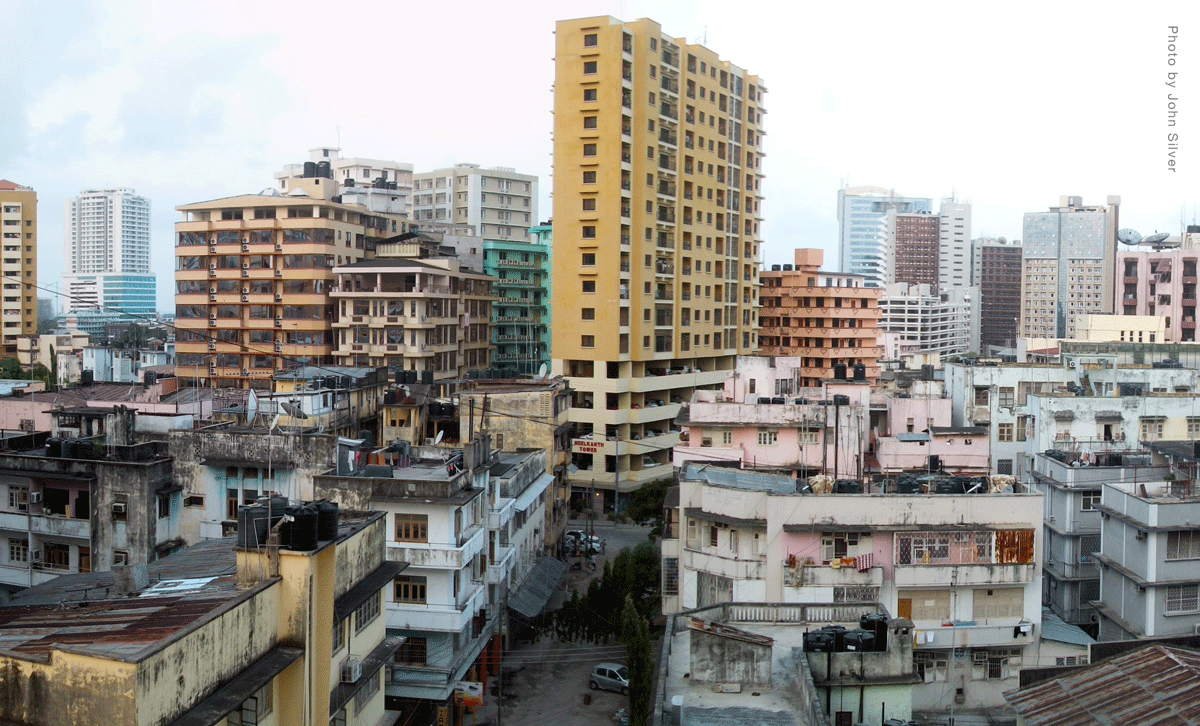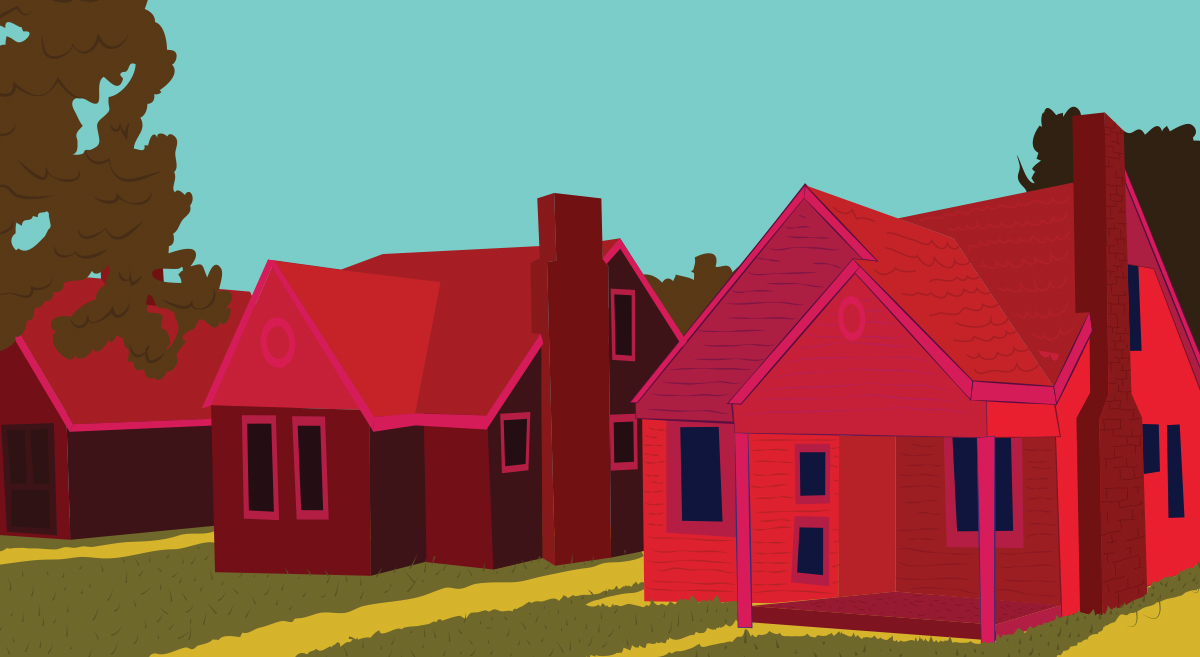



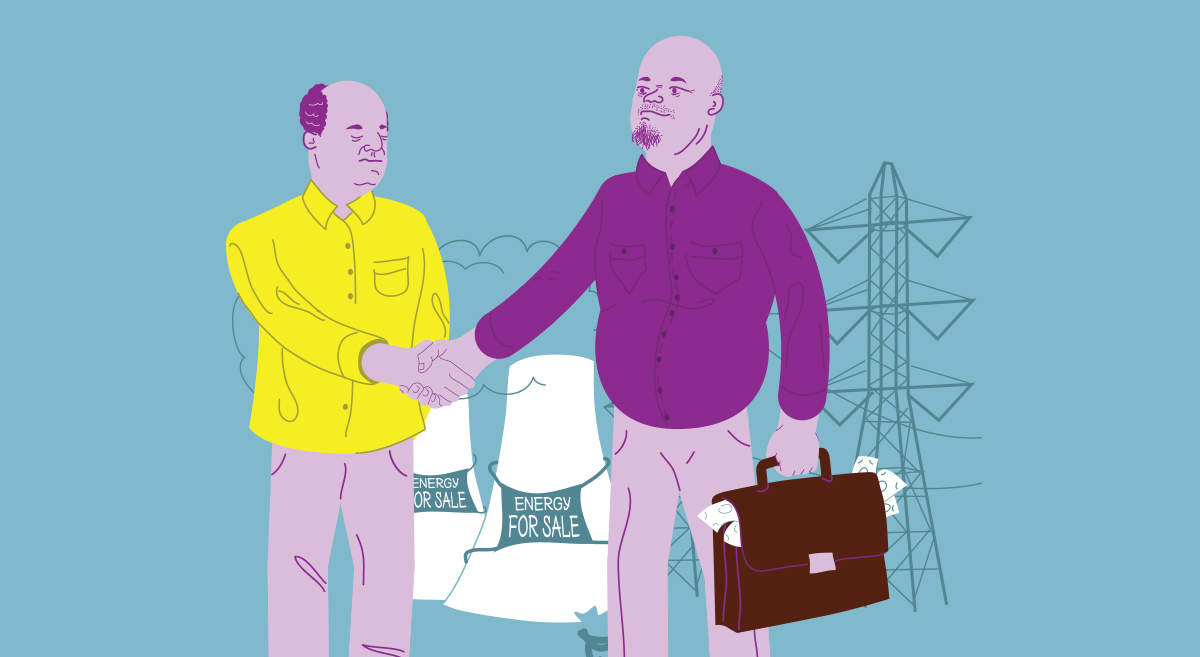
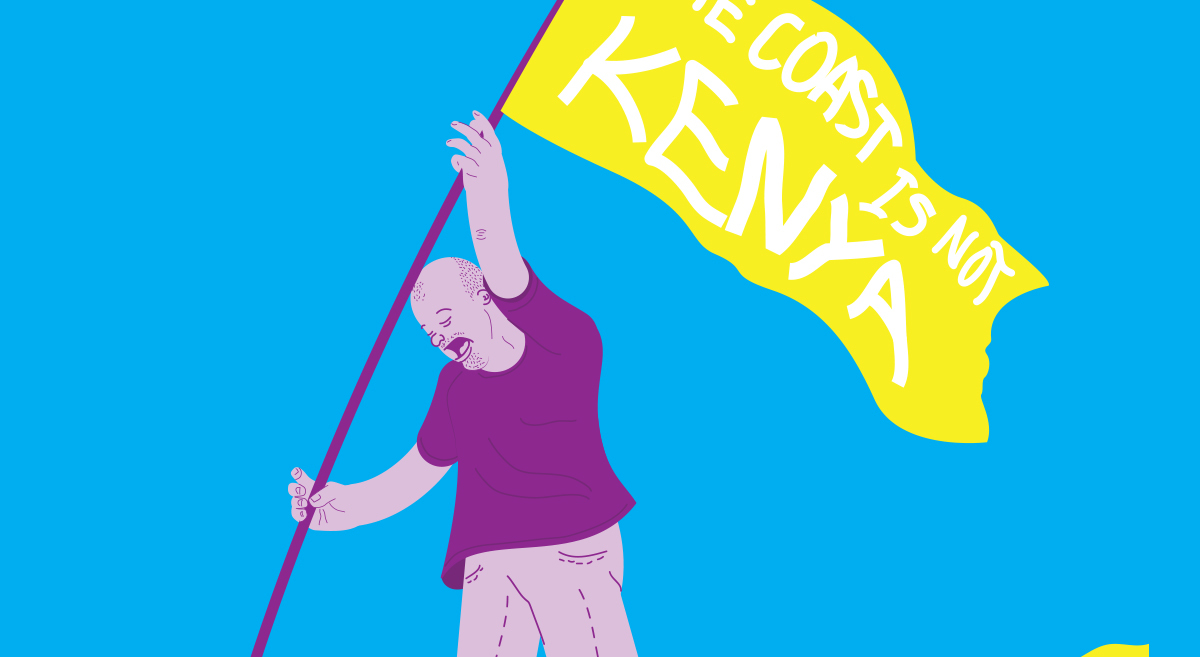

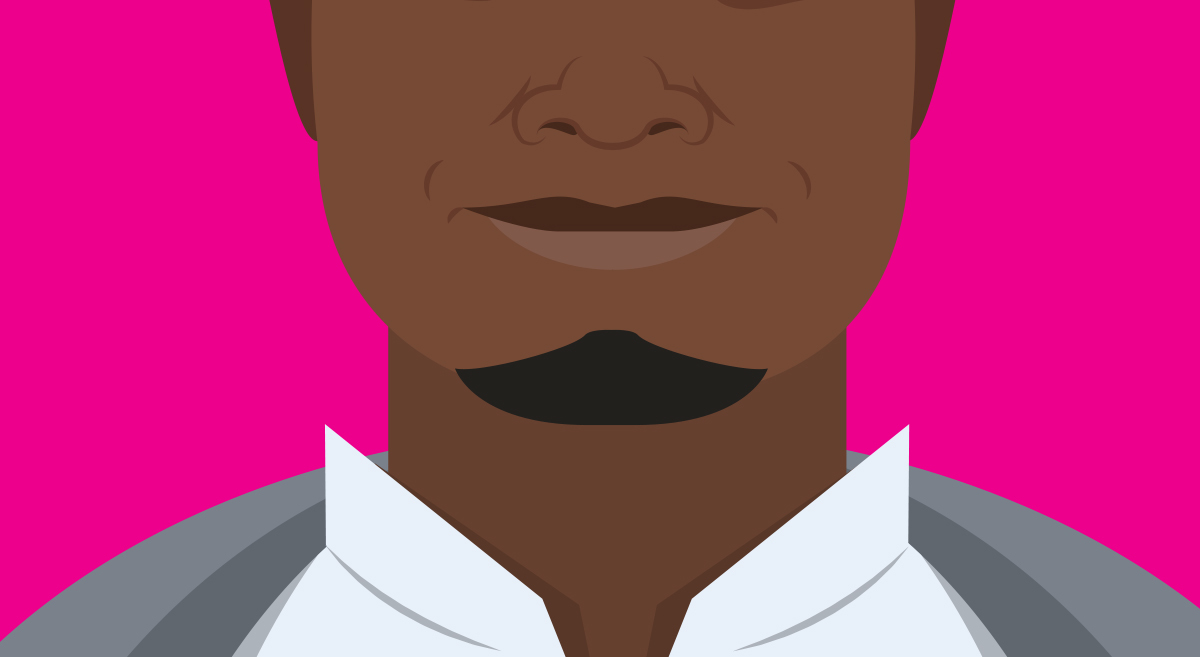
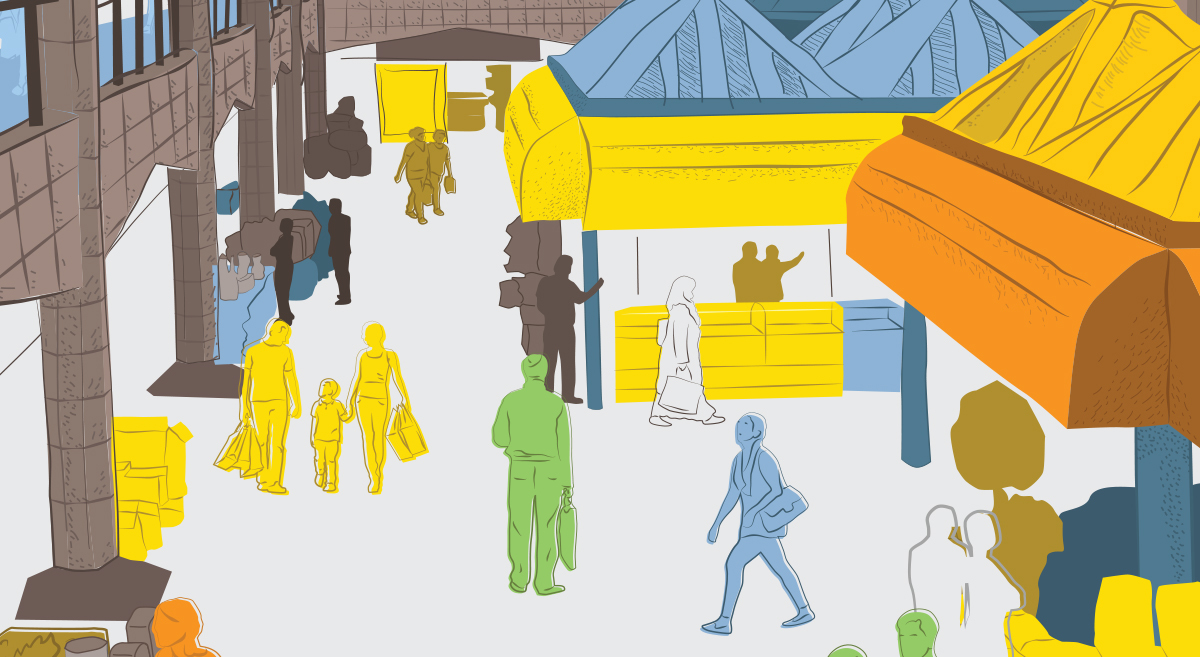

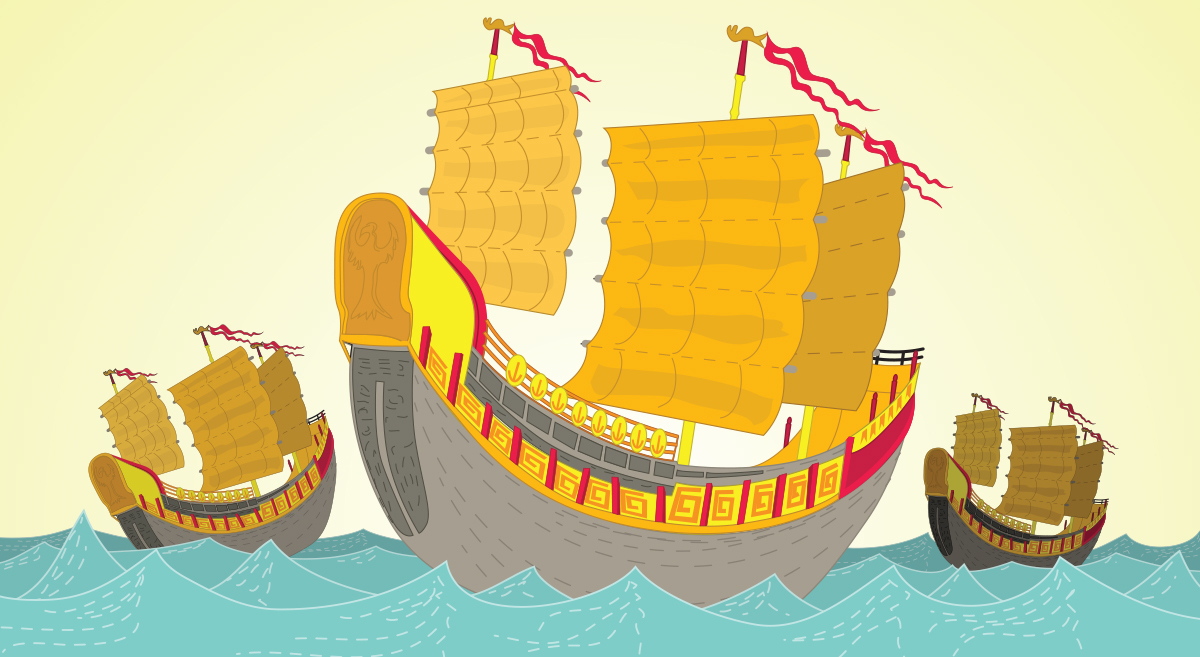

Words by AbdouMaliq Simone & Leonie Newhouse
The East African corridor that spans the Indian Ocean from Somalia to South Africa is in the process of being radically re-shaped. The area has become one of the world’s new epicentres for investment in resource extraction, corporate agriculture and infrastructure development. Yet as this infusion of material and financial investment is reshaping economies, its effects are much broader. They extend to residents’ cultural imaginaries, everyday meanings and the organization of social life along this coastal region. Images of a near future of smooth and easy transport from port to city inspire some actors’ attempts to grab hold of the reigns of urban restructuring, to steer it to their advantage. While others look to revitalize memories of long-standing trade relations with Asia in order to emphasize and historically root the potential of the region as a substantial node in the enhancement of the Indian Ocean as an economic powerhouse.
In this series of essays, we probe the on-going transformations in the East African corridor, paying particular attention how these are mediated in and through social life. We do so by considering ideas of circulations and crossings—between hinterlands and urban centres, as well as within a rising Indian Ocean economy.
The Indian Ocean littoral has been the object of increasing volumes of inward investment, occurring across different temporalities and scales. It is not yet clear, though, how the distinct nations making up the corridor, fraught with the difficult colonial inheritances and post-colonial conflicts, might consolidate these investments for broader social and economic gains. One of the challenges is the speed of these intersecting changes—in land use and ownership, in the mechanisms of infrastructural investment, and in the physical remaking of cities. Moreover, the reformatting of policy and legal frameworks taking place in the region’s primary urban centres—Nairobi, Kampala, Dar es Salaam, Addis Ababa and Maputo—has allowed financial flows to be directed into transforming large tracts of existing urban built environments, ready for appropriation. Taken together, these processes are spurring new forms of internecine conflict, urban inequality and population displacement.
Yet these new, high-end suburbs and satellite cities are also often oriented to a variety of elsewhere. They look outward toward new resource frontiers open to consolidation, or toward burgeoning markets ready for capture—as the next generation of Africans leapfrog into the future. As such, these investments signal not only a re-making of the city, but of the relations that connect urban life to its material, social and imaginary hinterlands.
How do such rapid transformations intersect with enduring problems of underdevelopment, shrinking volumes of arable land, a highly mobile population composed of both speculative sojourners and political refugees, high rates of unemployment and reliance upon makeshift economies? As the Indian Ocean region becomes an epicenter of new formations of investment that draw it further within Asian financial, technical and cultural circuits, how will specific national and local interests act to direct these flows? What are the critical institutions and mechanisms leveraging these transformations, and what cultural contestations underlie them?
What kinds of cosmopolitan imaginaries—in terms of anticipatory cultural, aesthetic and bodil y practices—do they elicit?
As a plurality of fault lines and alliances emerge in the efforts to shape the control of resources, how do the region’s cities recompose social and economic arrangements? As the region’s cities are increasingly imagined as the nexus for substantially expanded transnational interchanges, what kinds of social complexities are likely to ensue? Are there new modes of urban development that do not simply mirror standardized formats inherited from elsewhere, but rather emerge from long-honed practices of inhabitation on the part of the region’s urban majority?
As these questions make clear, corridors are not simply economic fabrications. They are conduits of force. As they reach between hubs—of generation and exchange, of sea and shore, of city and hinterland—corridors organize economies, politics and social life around particular directional priorities. In this way, corridors produce certain alignments, which may mean disconnection as often as it does connection. Corridors are also strange non-places, meant for passage, for movement-through rather than inhabitation.
In our call to think about what it means to inhabit the corridor, then, we want to consider how they channel city life in relation to materialities and imaginaries of connection, but also how they are themselves transformed and directed (or diverted) through people’s discrete and multiple acts habitation. Contrary to an image of unimpeded connection, then, the corridor is economically, politically and socially productive precisely because of such accretions of habits of circulation, of stopping to catch one’s breath, or racing to get a leg up.
The channelling effects of corridors are not merely evident in the physical transformations of the built environment. They are also reflected in the ways that people attune themselves to the new or anticipated opportunities that go along with these transformations, the ways that people’s attention is drawn into the grand narratives of development and how they attempt to inhabit these imagined spaces and make them their own. From the substantial writings about affect in recent years, we know how such collective affective atmospheres propel alliances that exert force—things leap over, circumvent, leak through, spread out, ramify beyond household, nation, kin, citizenship and class. But if we are to avoid turning this focus on affect into some kind of protean vitalism, it is important to keep in mind the way that people, in their multiplicity of interests, capacities, and commitments instantiate themselves in structuring manoeuvres, the way they extend themselves as available to be inserted into structures and plans not of their own making as a way of proffering a certain claim, or of maximizing the scope and efficacy of actions and events. Inhabiting the corridor, then, means holding on to histories that might otherwise be jettisoned, or attempting to concretize openings and gains as the ground on which these have been built slips away with the next tide of investment, policy innovation, formalization or strategic abandonment.
In this diverse collection of essays, our goal is to explore what it means to inhabit the corridor. We consider the myriad ways that people connect to, move through and inhabit these spaces-in-transformation. Grounded in various urban and urbanizing nodes along the East African corridor, we respond, in our own ways and in combination, to a set of concerns that intersect with an East African turn toward Asia. While much is new in these oceanic connections, we must also attend to continuities—the long-honed repertoires of urban living and patterns of urbanization—as well as to the ways in which the longue-durée of maritime interrelation and crossing along the Indian Ocean littoral resurfaces in contemporary practices around property, in notions development or in the aesthetics of prosperity. Collectively, we look simultaneously at dearly held legacies as well as emergent modalities of the urban. The essays can be grouped into three loose themes, but read together they build on and cross cut each other to offer an impression of urban life along the corridor.
In a corridor long characterized by histories of trans-local relations, a number of questions arise:
In what ways are the acts of collecting and arranging the material requisites for dwelling embroiled in, or disarticulated from broader social and political struggles?
How do urban inhabitants weigh the imperative toward visibility and display, which make them legible to others against desires for a degree of opacity and obfuscation that may extend their room to manoeuvre?
If infrastructure is a material inscription onto the surfaces of things, if it is a technology of constituting particular domains, narratives, conduits, articulations—something that both constitutes and wounds—how does infrastructure operate to bring into existence new forms of “regional consciousness,” including senses of home and elsewhere, senses of interrelatedness among seemingly disparate places and times?
How does infrastructure attempt to “catch up” to existent and emerging “itinerant” or “popular” circuits of movement and exchange; how does it facilitate or ward off the capacities of circulation and emplacement?
How do the multiple forces exerted by circuits of movement, new forms of regionalization, deep histories of trans-oceanic commerce, political contestation, resurgent and waning nationalism and extended urbanization create new territories of operation for social life in a process of continuous decomposition and recomposition?
What kinds of modes of conveyance, media, aesthetic performances and mappings are deployed to organize senses of the region, as well as ideas and viewpoints about what courses of action are possible, profitable, and valuable?
How do inhabitants acquire a working knowledge about where to go, how to create and mobilize assets, forge itineraries of circulation, put together legitimate claims on places and resources?
As cities are wedged in the interstices between land and sea, how are changing configurations on the disposition of land and the navigational framework of the sea reworking urban socialities?
How do new modalities of extraction, occupancy and displacement conjoin with the growth cities and urban ways of life?












By using this website you agree to our Terms and Conditions. Please accept these before using our website.

